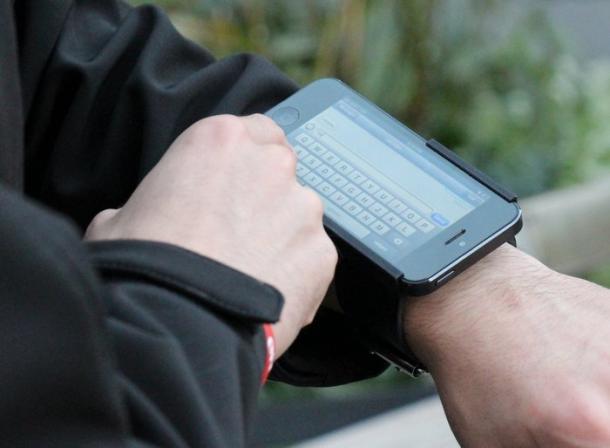The Apple Watch was created under crazy, sleep-deprived conditions, with its first working prototype being an iPhone strapped to the wrist with a Velcro strap, and the Digital Crown represented by a custom dongle plugged into the bottom of the phone via the headphone jack.
Those are a couple of the revelations from a new in-depth article, reporting on the creation of Apple’s eagerly anticipated wearable device.
Published by Wired, the article draws on authorized interviews with several members of the Apple Watch team we’ve not heard from before — including technology VP Kevin Lynch and human interface group head Alan Dye.
Among other claims, it is reported that people in the Apple design studio are encouraged to work crazy hours since this is when people are supposedly at their most creative and fearless.
“So it went in the Apple design studio: As the team worked away on app-launch animations and the new iOS 7 Control Center, daytime conversations about smartphone software led to late-night discussions about other devices. Questions started coalescing around the idea of a watch: What could it add to people’s lives? What new things could you do with a device that you wear? Around this time, Ive began a deep investigation of horology, studying how reading the position of the sun evolved into clocks, which evolved into watches. Horology became an obsession. That obsession became a product.”
It also reveals that among the early Apple Watch experiments was one from the iPod team based on a click wheel concept, and that a chief software concept was that “An interaction [with the Watch] could last only five seconds, 10 at most.”
An early (abandoned) version of the software reportedly took the form of a timeline, which presented information chronologically from top to bottom rather than trying to cut down on the amount of information that is shown.
One other intriguing tidbit comes when the author is describing the Taptic Engine and how it uses different vibrations to indicate different types of notifications. Designers and engineers reportedly sampled the sounds of everything “from bell clappers and birds to lightsabers” and then attempted to turn these sounds into physical sensations.
It’s a fascinating revelation — and it’s not the first time in 2015 we’ve heard Apple and “lightsabers” in the same story. An earlier news item claimed that Jony Ive is the man responsible for the new “spittier” look of the lightsabers for the upcoming Star Wars movie.
You can read Wired‘s article here. It’s definitely interesting — not least because it tells the software side of the Apple Watch story instead of the Ive-centric angle focused on in a recent New Yorker article.
It’s also further evidence of how Apple is happy to open up a bit more about its product development process, something that would have never happened during the Steve Jobs days.


